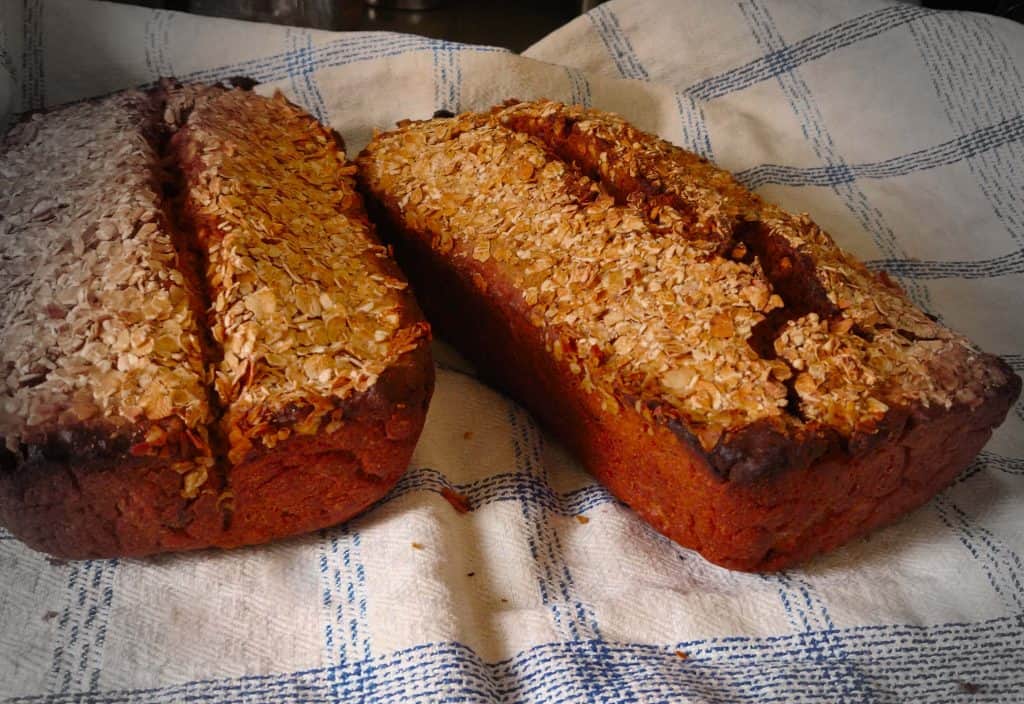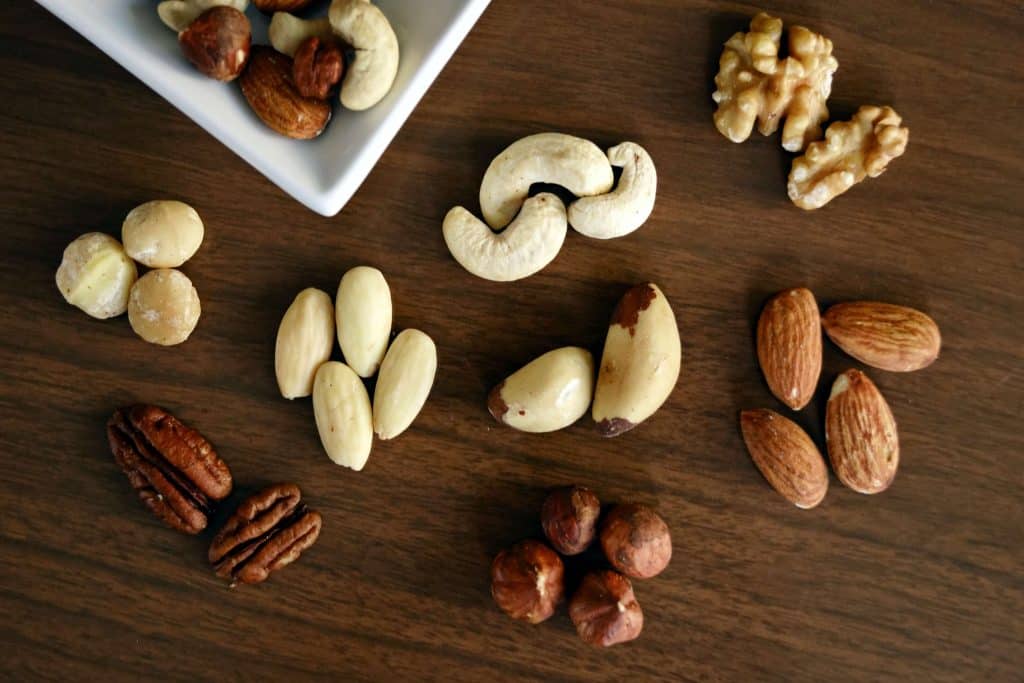Maintaining a healthy diet requires your daily needs. Often a group of food types is associated with a good supply of certain nutrients. When choosing the food you want to eat, therefore it is helpful to know how our nutrients are categorized. Certainly, you heard of macro and micro nutrients. Here is a brief introduction.
Instead of blindly following one certain trend or lifestyle you can improve your overall well-being by understanding how your nutrients work and what they are.
This chapter serves as an overview into our nutrients and tries to give a rough overview of the supplies you need. Some topics will be handled in more detail in future posts.

Water
Water is - despite being forgotten very often - also considered a nutrient and is the most important of all. It fulfils a long list of functions in our body, and we cannot survive long without enough intake.
It is the main component of our lymph and blood. It moves out toxic substances as pee, regulates our body temperature by sweating and moving into or away from our vessels. Water is also often involved in the absorption and transport of vitamins and other molecules.
If you are not living in hot regions and do not do much sport, you should on average at least take 2.7 (women) or 3.7 (men) litres of water daily. With exercise and exposition to the heat the needed intake can raise fast. If you drink too much water, it can intoxicate you by flooding away important sodium. You should therefore make sure that you drink your water well distributed during the day, since your kidneys can process up to 0.8 to 1 Litre of water per Hour.
What you drink matters

You can fill your water supplies in many ways. However, you should always be aware of that the choice of beverage you drink can greatly impact your digestion (coffee for example can cause heartburn) and supply of macro and micro nutrients. It does make a big difference whether you drink water, tea, juice or wine. If your aim is to lose weight, you should avoid high caloric drinks like alcohol, soda or juices. If you want to work on your vitamins, a smoothie might be a good support for that goal.
Macro nutrients
The first real group of your nutrients are the macro nutrients. Unlike micro nutrients your body needs high amounts of the substances categorized in this group.
The main purposes of macro nutrients are energy supply and their function as building blocks for muscles, our brain or hormones. Of course, we are talking about carbohydrates (carbs), proteins and fats.
Many diet trends you see are focused around macro nutrients. While one might demonize carbs and focus on fat and protein, others try to go the direct opposite way. No matter into which recommendation you look, the supply of your micros is too often out of focus and can become a deficit.
Even though macro nutrients appear pretty simple and well understood on the surface, there are still so many unclear areas that cause a lot of confusion, where still lots of science needs to happen in order to fully gasp the big picture.
Carbs
Carbohydrates are your main energy supply for both your brain and your muscles. Without a decent supply of carbs, you can feel tired and weak and you should make sure that you take in enough calories each day to fill your energy levels.
Carbohydrates come in short bits or long chains. Sugars, or monosaccharides is the form of carbs that our body can work with. Longer chains of monosaccharides will be broken down into sugar bits in your digestion. As a rule of thumb you can say, that the more complex a carb is, the slower it gets digested and keeps you full for more time.
Your supply of carbs should come from various whole food sources like grains, fruit and vegetables to cover your energy needs during the day. A good mix of those food sources can support your journey towards a balanced diet.

Short carbs on the other hand can spike your blood sugar levels fast and are processed in no time. As a result you get cravings again soon which can lead to binge eating and weight gain. The right choice in carbs can therefore strongly influence how often you feel hungry. You find short carbs often in highly processed foods, like sweets or industrial baked bread.
According to the WHO/FAO at least 55% of your daily energy need should come from carbs. One gram of carbs supplies you with 4kcal of energy.
Protein
Proteins are often treated like the holy grail of sports nutrition. While it is true that you need a decent amount of protein to build up muscle and maintain your physics, it is even more important that you get a diverse supply of all essential amino acids.
The main purpose of proteins are
- Building blocks for muscle, skin, hair, nails and more
- Repair and maintenance of cellular structures
- Transport of oxygen (haemoglobin) and water insoluble nutrients
- Construction of hormones and enzymes
In theory, you can eat double the amount of protein you need, but still can develop a deficit if you don't manage to supply your needs of all 8 essential proteins. A good indicator on how valuable a protein source is for you, is the bioavailability index. The higher the bioavailability, the more aligned is the source of protein towards the human needs.
Excess protein gets transformed into energy and counts with 4kcal per gram towards your daily energy intake. A "too much" of protein therefore could also ruin your fitness or diet goal. In reality however, that's barely possible, as proteins are very filling.
Protein is not everything
On average, around 20-30% of your body weight is built on protein. Just by eating more protein, you won't automatically build more muscle. You rather should adapt your protein intake according to your physical activity and not vice versa. With low to no physical activity, you need around 0.8g to 1g of protein per KG of bodyweight. In order to build up muscle through intense exercise, your daily intake can raise to 1.7g per KG of bodyweight.
Even though many cellular structures are built on protein, they are not the exclusive components of such. To build for example red blood cells, you need both the protein and all necessary micro nutrients like iron. If one essential component is missing, you won't be able to compensate that through a higher intake of protein.
A balanced diet is key to achieve your goals. By just chasing high protein levels without making sure you cover the other areas of your daily needs, you won't archive much and rather build up your muffin tops.
Calculate how much protein you need
Your body weight
Your goal
daily need of protein
Fats
Oh boy, Fats! They have been parts of so many controversies. They are on one hand associated with disease and cardiological problems, on the other side they are an absolute must for a healthy diet. Most diet plans or nutrition trends tend to either go full fat low carbs or in the exact opposite.
From a chemistry point of view, a fat or fatty acid is a molecule built from a chain of carbon-hydrogen blocks and a Carboxyl group, which has acidic properties and is the source of the term fatty acids. The carbon chain can appear in various lengths and complexities.
Fact is that certain fatty acids play an important role in our body and you must make sure to get enough of them for your brain to function properly and to build required cell structures and hormones.
While there are many types of fats, only some of them are considered essential, meaning our bodies cannot construct them. Therefore, they need to be supplied though dietary means. Fat, by the way, counts with 9 kcal per gram towards your daily calories and therefore is the most energy-dense nutrient in our diet.
Here I only will give a quick introduction into the categories of fats. A detailed view on those can fill another article.
Saturated fats
Even though saturated fats are not considered essential, because our body can build them, they still play an important role in our body. They can be used for transport of vitamins, be part of enzymes, membranes and more.
High levels of saturated fats are associated with a negative health impact. As a general rule you can say, that you should not focus on supplying those types of fats. If needed, they will be built from available unsaturated fats in your body, provided you have enough of them.
Fats are saturated, if the chain of carbon-hydrogen has no double bonds between two related carbon atoms. With no double bonds, a fat looks like a long straight "stick" made out of carbon groups. At room temperature saturated fats are usually solid - like butter, margarine or coconut oil.
Unsaturated fats
This group contains the essential fatty acids we need - you might have heard of Omega3 and Omega6 fatty acids. Those fats must be part of your diet.
Unsaturated fats are fatty acids with one or more double bonds in their chain of carbon-hydrate. You can distinguish between mono-unsaturated (non essential) and polyunsaturated fats, whereas a polyunsaturated fat contains more than one double bond.
One important criteria of unsaturated fats is the type of double bond the carbon hydrate chain builds. When both hydrogen atoms are on the same side of the double bond between two carbon atoms, the bond is in a so called cis configuration. The chain of carbon-hydrate builds an angle at a double bond. Only when all double bonds follow these criteria, a fatty acid is considered unsaturated.

Trans fats
While trans fats in their chemical sum look like an unsaturated fat, their dimensional structure and therefore their behaviour is completely different from an unsaturated fatty acid. Like unsaturated fats, their carbon-hydrate chain contains double bonds.
The hydrogen here is however positioned in a trans configuration (Latin "across"), meaning they are sitting on the opposite sides of the chain. Instead of building an angle, a trans double bond shifts the chain a bit but continues in the same direction, a bit like a stretched out letter Z. Like saturated fats, they are solid at room temperature.
Trans fatty acids are found as well in animal products, but mostly occur in highly processed industrial food. While serving commercially interesting purposes, for example prolonging shelf life and being way cheaper than other firm fats like butter, they are as well associated with many diseases like coronal heart disease and atherosclerosis.
When using the wrong oil or frying too hot, it can easily happen to transform your healthy unsaturated fats into unhealthy trans fats. Have you ever looked at a used pan and saw firm fat stick on it, after it cooled down? Yep! That's most likely the result of the wrong oil usage.
(Triglyceride)
Triglyceride should technically not be part of this list. However, their function in the body and their importance as an indicator for health makes them often appear in medical studies, articles and blood test results.
Triglyceride is your body's way of storing energy in the form of fat. In its centre sits a glycerin molecule, which is capable of holding 3 fatty acids attached to it. In this form fat can travel through your blood, be stored in fat cells (adipocytes) and later be brought where needed as energy or building material.
Higher densities of triglycerides in your blood can be a sign of overweight and often come along with high cholesterol. Also, they are an indicator for a risk of diabetes type 2. Too high levels of blood fat are caused mainly by an excess in energy. Both excess carbs and protein will be transformed into fat and stored in triglycerides. Blaming either sugars or fat for overweight is a common misconception. You can archive obesity with any of carbs, protein or fats.
What matters is that you maintain a balanced energy level without excess, while covering the nutrients that are essential.
Micro nutrients
You guessed it right. Micro nutrients are the ones of which you only need small amounts. Just because the amount you need is little, it does in no possible way mean they are not important. Besides some vitamins that our body can produce, most of the micros are essential and need to be supplemented through food.
Your micros are further categorized into Vitamins and Minerals.
Vitamins
Vitamins are organic compounds that are part of chemical reactions in your metabolism. They play many roles in your internal processes, like catalysers and regulators for carbs and proteins and building parts of your immune system.
You can distinguish between vitamins that can be stored and vitamins that need to be supplied frequently. Usually fat soluble vitamins are the storable ones, while water-soluble vitamins find their way out of our body through urine. However, some vitamins, for example B12, can still be stored despite the fact that they are hydrophilic.
Parts of our vitamins can be used as they are, others come in the form of provitamin and then get transformed to the final product in the body.
In western societies it is not common to have a deficit of vitamins. Only folic acid may become a bottleneck, especially during pregnancy, when the demand is usually more than 100% higher. It is common to supplement folic acid in this case.
When following a plant focused or even vegan diet, the supply of vitamin B12 is with no doubts critical and should be supplemented.
Minerals
When talking about minerals in nutrition, usually we mean essential chemical elements, that are required for many processes within our body. Based on the amount we need, they can be categorized in macro minerals and trace minerals. The most well known minerals might be iron, calcium, magnesium, sodium and iodine, which are all essential.
Minerals don't get "used up" like energy or vitamins during our digestion, however we can lose them through urine, blood, sweat and other means. That's because minerals don't come as complex molecules that get transformed into something useful, but are more like the smallest building blocks that then get used to build something bigger.
Minerals play a role in many functions within our bodies. Iron for example is a key component for red blood cells, where it makes sure that the cell can carry oxygen. When a blood cell dies, the iron can be re-used.
Since minerals don't "wear off" the amount of your daily intake is relatively small and usually we talk about milli or micro grams that need to be supplied. If your food is well combined, there is usually no need to supplement any mineral.
However, the supply depends on the soil our food grows on. One good example is iodine: while in North America the soil carries enough iodine to fulfil the human needs through normal food, in many areas of Europe the ground does not contain enough to provide a sufficient supply. Depending on the source asked and the region, around 10-40% of the population can have a deficiency of iodine. That's why iodized table salt is common and a good approach to tackle this deficiency.
Secondary plant substances
Plants produce not only substances that our body can make use of. Some of them also only give an additional use to the plant, but are not essential for their survival neither. Think of for example pheromones that attract or scare off certain animals or poisons that kill a harmful type of bacteria. Those are called secondary plant substances.
We find loads of those components in our plant-based food. Despite not being essential, unlike macro and micronutrients, many secondary plant substances can support our digestion and other processes in our body.
Some secondary plant substances may be misused for fun purposes, like the good old THC, but many of them enhance our capabilities of absorbing essential nutrients more easy or have anti-inflammatory effects.

A very well known example is fibre. We cannot directly digest fibre, even though it belongs to the family of carbs, but it moves processed food through our guts and can help prevent colon cancer. They also lower the density of nutrients overall, because they take up space in the food and make us full without providing anything beneficial.
In a nutshell
The theory is easy: you should eat well in order to provide your body with sufficient levels of all essential nutrients while making sure not to excess anything that our body can store, especially energy.
The easiest way to archive that is to eat diverse and focus on whole foods. Try to keep get your carbs from whole grains over white flour products or sugar. Eat enough nuts and seeds to be sure to have enough of the essential fats.
